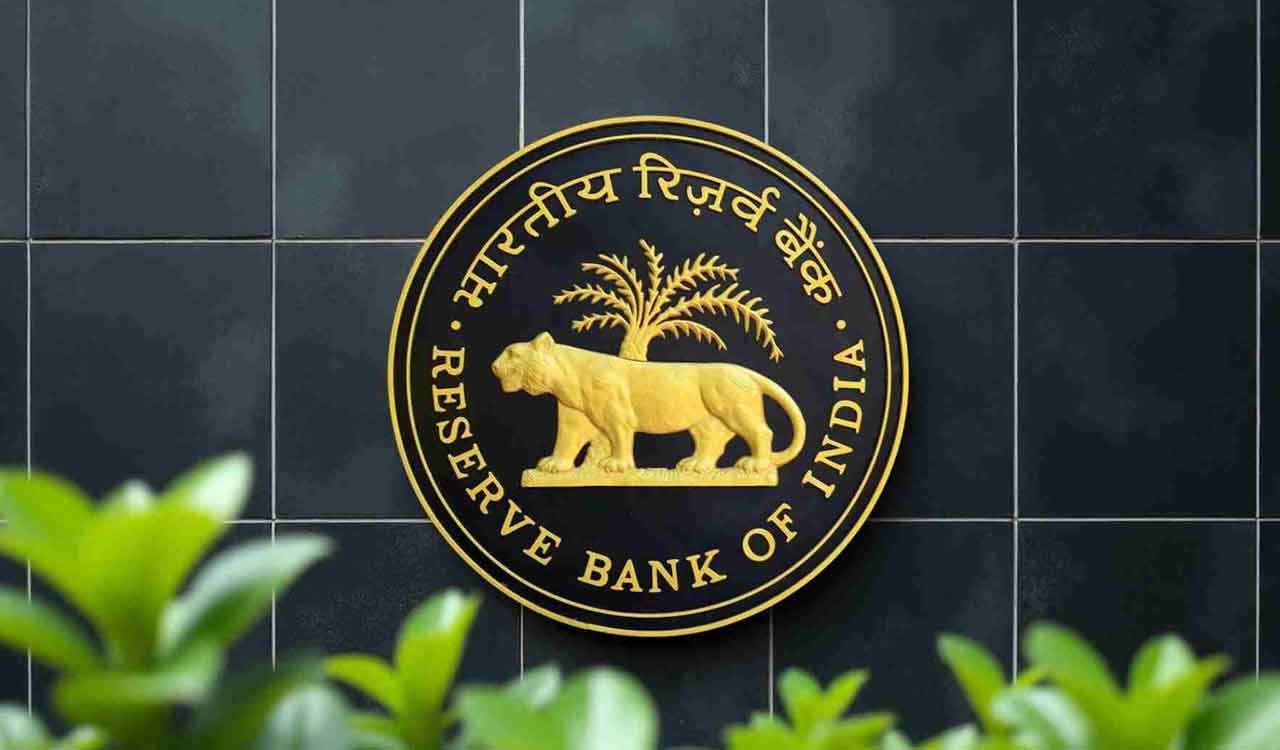Opinion: Banking in the Digital Age
Indian banking is transforming rapidly as digital innovation replaces traditional services — the winners will be banks that balance trust with technology

By T Muralidharan
Whether you’re checking your salary on a banking app, paying for groceries with UPI, or calling customer care about your credit card, banking is part of your daily life. But what many people don’t realise is how fast Indian banking is changing — right under our noses. Traditional public sector banks such as SBI and Bank of Baroda, and private banks like HDFC and ICICI, are racing to win your trust on your smartphone screen. This competition is transforming the customer experience.
From Queues to Clicks
Let us rewind a bit. In the 1960s, a trip to the bank was for withdrawing cash or getting a demand draft. In the 1980s, banks began offering loans and fixed deposits to middle-class families. By the 2000s, ATMs and debit cards made banking more accessible. Then came the internet and mobile revolution. Today, over 11 billion UPI transactions are processed each month (NPCI, 2025). A Gen Z customer can now apply for a loan, make payments, or invest—all from their phone, no branch visit needed.
Gen Z, born between 1997 and 2012, is now entering the workforce. They’re digital-first, mobile-savvy, and expect real-time service. According to a 2024 KPMG-IBA report, 79 per cent of Gen Z prefer using mobile apps for money matters, 63 per cent demand sustainability-linked products, and over 50 per cent are willing to switch banks for better financial literacy tools. For Gen Z, trust isn’t built through a branch manager — it’s built through an app experience.
Private Banks Vs Public
Private sector banks have surged forward. As of FY24, they control over 35 per cent of total deposits and 36 per cent of loans in India (Union Bank of India report). They’ve grown because they’re faster, more responsive, and digitally mature. Banks like Kotak and Axis now offer instant digital onboarding, AI-based personal finance tips, and sleek mobile apps that attract younger users. For many urban customers, especially in metro cities, private banks are the first choice.
It’s no longer enough to offer a savings account and a home loan; banks need to act like digital service providers, offering what customers really want today
Despite their slower pace, public banks continue to dominate rural India. Over 65 per cent of agricultural and small business loans are still disbursed by public sector banks. They offer trust, coverage, and familiarity. Many small-town customers have a personal rapport with branch staff. Now, even these banks are going digital — SBI’s YONO app has over 60 million users. But they face challenges in agility, user interface, and customer service innovation.
Rise of Digital Fraud
The dark side of digitisation is the increase in online fraud. In FY25 alone, total fraud in the banking sector jumped to Rs 36,000 crore, a threefold increase over the previous year (RBI Annual Report, 2025). Private banks reported 60 per cent of the total number of fraud cases — mostly card and cyber fraud. Public sector banks saw higher-value frauds, mainly linked to large loans. As India banks more online, digital literacy and cybersecurity will be just as important as customer service.
Banking in 2030
By 2030, walking into a bank branch may be a thing of the past. Voice-assisted banking, AI-driven investment advice, and WhatsApp-based loans could be the new norm. SMEs may receive credit automatically based on sales data. Banking will become integrated into daily apps and e-commerce. Gen Z will expect banks to offer carbon tracking, goal-based savings, and ethical investment options. Traditional services like passbooks and cheques may disappear entirely.
To keep up, both public and private banks are partnering with fintechs. Many banks now fund peer-to-peer lending platforms or co-create digital tools for wealth management and payments. Public banks are leveraging fintechs to digitise lending and customer onboarding. Private banks are using them for analytics and AI tools. The RBI’s regulatory sandbox is helping test new models in a safe space. This collaboration between banks and startups is likely to define the next decade.
What Should You Do as Customer?
Compare digital services from your bank. Try out their mobile app, see how responsive their customer care is, and check how easy it is to apply for a product online. If you’re new to banking, start with simple tools like UPI or mobile balance checks. If you’re experienced, explore goal-based investments or credit cards with spending insights. But always stay alert — don’t share OTPs or passwords, and verify messages before clicking links.
Tech + Trust = Tomorrow’s Banking
Banking in India is moving from counters to code, from chequebooks to chatbots. The winners will be banks that combine deep trust with digital innovation. Public sector banks will modernise. Private sector banks will deepen their reach. And customers — especially Gen Z — will expect more: faster service, smarter tools, and ethical choices. In the digital age, banks will no longer be just places we visit. They will be platforms we live with. And that changes everything.
Digital Rupee
India’s Central Bank Digital Currency (CBDC), also called the ‘Digital Rupee,’ is a major shift in how money itself works. Launched in pilot mode by the Reserve Bank of India in late 2022, the CBDC is a legal digital version of physical cash. It allows people to store and use money digitally — without needing a bank account or internet access. This could benefit millions in remote areas.
Already, banks like SBI, ICICI, and HDFC are involved in retail and wholesale trials. In the future, you may receive your subsidy, salary, or refunds directly as digital rupees, stored in a mobile wallet issued by your bank. CBDC is expected to make transactions faster, reduce costs, and bring more transparency. For customers, it means simpler, cash-like payments that are more secure. For banks, it’s a chance to rebuild trust, improve efficiency, and offer new services.
Embedded Finance, NBFC Competition
Banks are no longer the only institutions offering credit and financial services. Non-Banking Financial Companies (NBFCs) and fintech platforms are growing rapidly. They partner with retailers, travel apps, and e-commerce sites to offer ’embedded finance’ — loans, insurance, or savings options built into everyday experiences.
For example, when you buy a phone online, a credit EMI plan might be offered instantly — not by a bank, but by an NBFC working in the background. This seamless experience is pulling customers away from traditional banking interfaces. Many NBFCs also focus on niche lending, like vehicle loans, microloans, or gold loans, making them competitive in markets where traditional banks are slower or stricter. To stay in the game, banks will need to offer equally smooth and fast credit experiences.
The Big Shift
Historically, banks were essential for two things: storing money and moving money. They issued loans and enabled payments — from cheques to online transfers. But this monopoly is fading. Today, digital wallets like Google Pay, PhonePe, and Paytm let users pay instantly without directly using their bank account interface. With CBDC, the RBI is introducing a new form of digital cash that doesn’t need a bank to exist. If adopted widely, both payments and credit could bypass banks altogether — with customers using CBDC for daily spending and borrowing directly through embedded apps or NBFCs.
What Banks Must Offer Next
To survive and thrive, banks must move beyond the basics. It’s no longer enough to offer a savings account and a home loan. Banks need to act like digital service providers, offering what customers really want today:
• Instant digital KYC and onboarding
• Budgeting and goal-based saving tools
• Personalised investment advice
• Integrated insurance offerings
• Real-time loan approvals based on spending patterns
• Alerts, nudges, and financial wellness trackers
These are value-added services — not core banking functions, but offerings that make banking useful and sticky. The more customer data a bank can analyse securely, the more relevant its services will be. This is where public and private banks must both innovate.

(The author is founder, TMI Group)
Related News
-
Acid attack on beauty parlour owner on outskirts of Patna
7 mins ago -
New Year’s Eve cruise to offer glimpse of India’s lone active volcano
12 mins ago -
Russian general killed by bomb under his car in Moscow
20 mins ago -
Maoist arms-manufacturing facility busted in Chhattisgarh’s Sukma
27 mins ago -
Three women farm laborers killed, 14 others injured as lorry hits jeep in Mancherial
40 mins ago -
Western intelligence suspects Russia is developing new weapon to target Musk’s Starlink satellites
43 mins ago -
Unlocking Exclusive Benefits Through Modern Salary Accounts
1 hour ago -
Rashmika Mandanna finds a second job on the sets of ‘Cocktail 2’
1 hour ago




